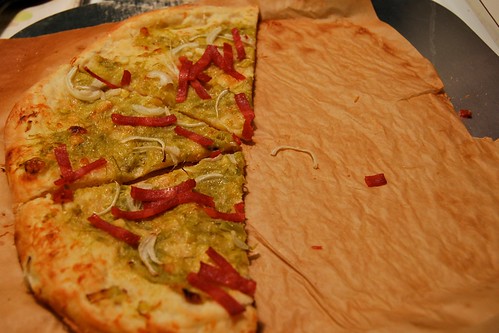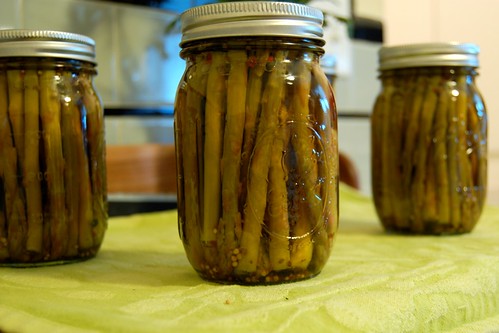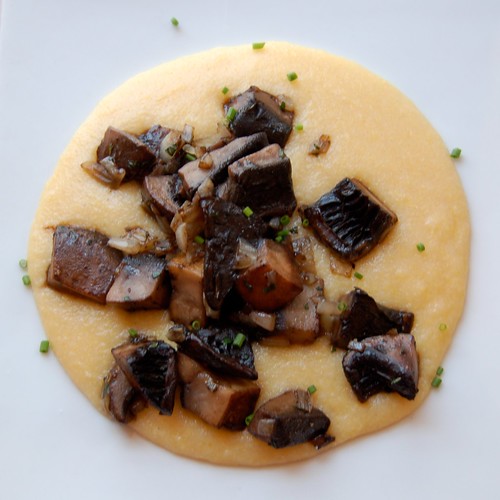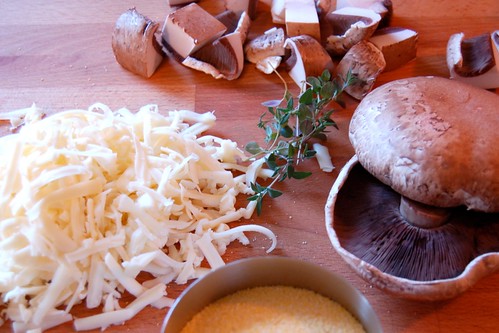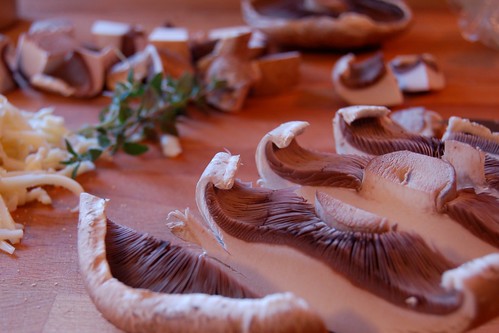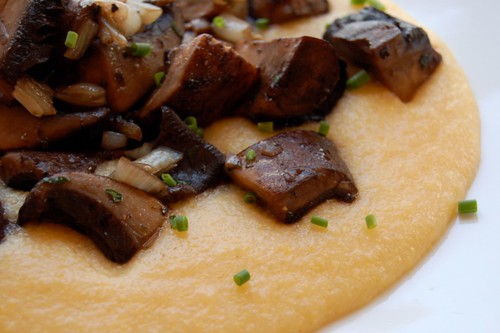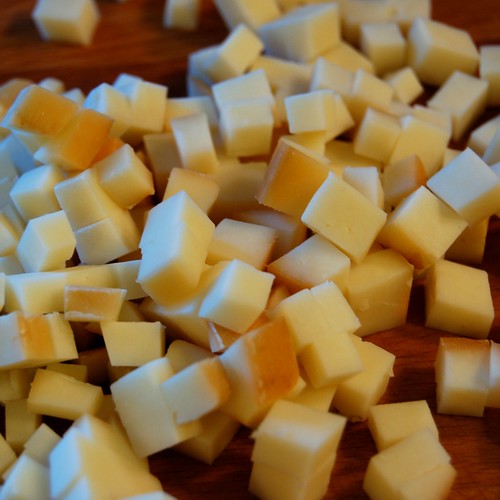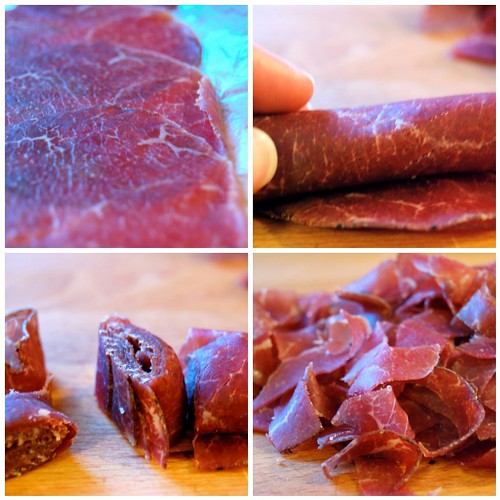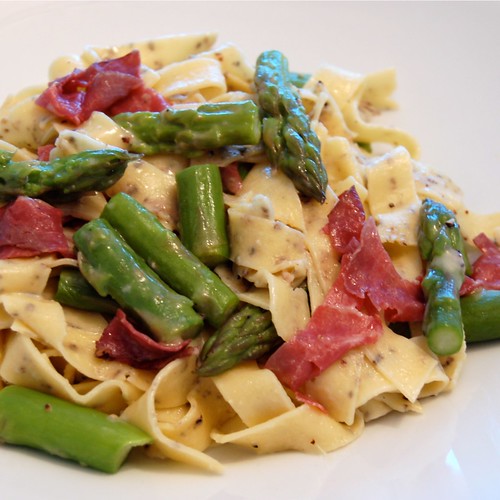Since I'll be out of town for the long weekend visiting future-family (that is, Adam's sister, bro-in-law, and parents - Hi Amy! Hi Matt! Hi Rita and Scott!), we've been mostly foraging for leftovers and going out for dinner this week. I don't have much to report on the recipe front, so I thought I'd take you on a little tour of my back patio container garden. Grab a glass of iced tea or a nice chilly beer, and I'll show you around.
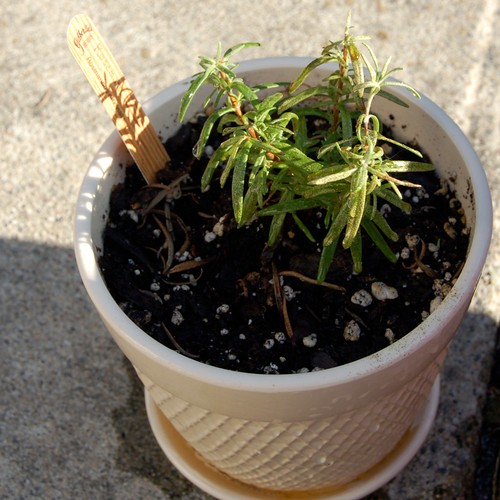
Let's start with the failures: I am not very good at growing rosemary. This is the fourth plant I have tried to keep alive in five years. Last year I didn't even buy a seedling because I'm so used to my rosemary dying within a month or two of transplant that I rarely cook with it, and that's a shame. I recently gave this one a big trim, hoping some new growth will sprout if I coddle it with frequent water and lots of sun, but it's not looking so good. Have you got any tips for success with rosemary?

Hola, Carmen! This mildly hot pepper is a new one for me. We started a bunch of hot pepper seedlings but, uh, none of them made it. Don't worry, I did have SOME seedling success, but this plant was purchased at Russell's Garden Center out in Wayland. (Boston area gardeners, do yourself a favor and check Russell's out - they have a huge selection and the staff is awesome.)
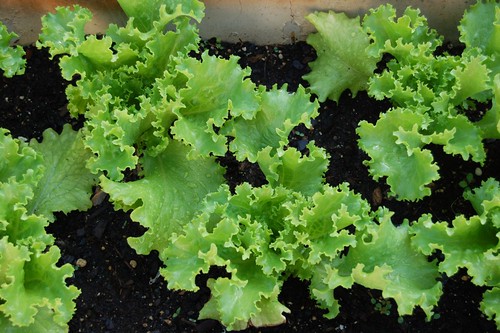
I like the name of this lettuce: salad bowl. Yep. Name the vegetable after where it will end up. I also think this sturdy green would make an excellent lettuce wrap. Maybe for some beef bulgogi?
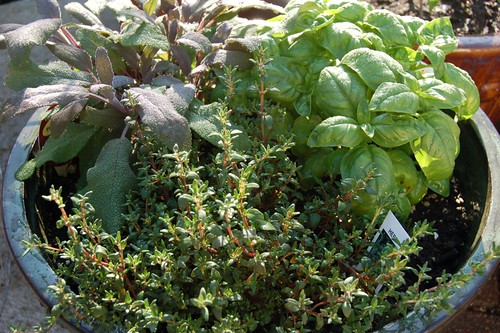
Friendly herbs, from top left, clockwise: sage, basil, thyme. I say friendly because these guys all like the heat and none of them are desperate for water, really. I water them about half as often as the rest of the garden.

Ah, the great white hope of my spring. Yes, that's right. These are my tomatoes. I've got two San Marzanos and two Sun Gold Cherries here, if I didn't mix up my seedlings too much in the last few weeks. The best part about these is that we grew them ourselves from seed. In a minute I'll show you how well they're doing...
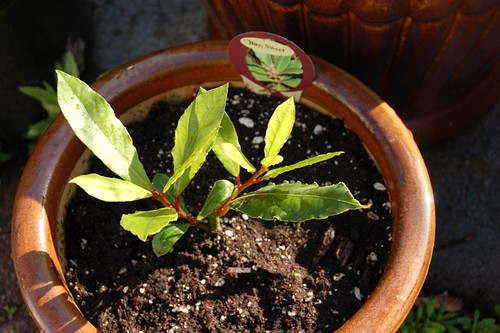
This is a fun one, I think. It's a bay! As in bay leaves, those leaves you buy dried in the spice section of the grocery store. Apparently if I take good care of it (and re-pot it a few times) this little cutting could grow into a five foot tree. If bay is as picky as rosemary I have my doubts, but we shall see.

This is my grandfather's oregano. Which makes me the third generation caretaker. My mother took a cutting from his original plant many years ago, and it moved with her when my parents moved seven years ago. Last summer Adam and I took a cutting from the oregano SHRUB at my parents' house and left it on Adam's porch, where it, ahem, didn't get any water for over a week. We brought it with us when we moved into this apartment, continued to water the sad, dry sticks, and lo and behold it came back to life a month later! We left it outside under the porch with the rest of the potted annuals last winter and it came back this spring. Thanks, Pepere.
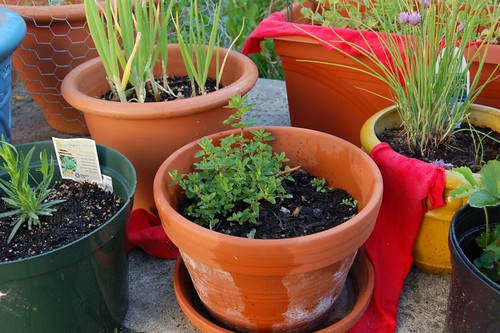
Oregano is center stage here, on the left is tarragon (a seedling from Russell's), with chives and strawberries on the right. The red clothes all over the place are bits of old t-shirt that we soak in white vinegar to discourage squirrels from diggin in the plants (apparently it smells like the urine of a predator, and it's much nicer than peeing on our plants.) That scallion looking plant behind the tarragon and oregano is an allium, indeed, but what a weird one...

Walking onions. Ann has some too! I got these from a coworker last fall, and I stuck them in this pot. In March, as soon as the weather warmed up even a bit, they started poking these green shoots out. Now the scapes are up, looking all weird and creepy and awesome. Eventually bulbs will form up a the top of the stalk, weigh down the plant, and cause it to bend over. The bulb then settles into the earth and re-sprouts the next season, and the onions "walk" around the garden. They don't really get to do that in containers, but they look happy to me.

Peas! I'm not sure what that yellowing is all about at the bottom of the plants, do you?

But we do have baby peas!
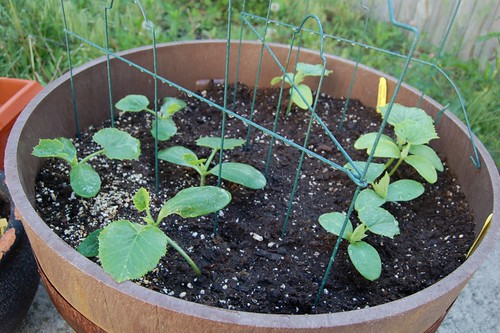
Zucchini on the left, cucumbers on the right. This was taken on the 24th.

This was taken today, the 28th. Ooooh boy. I clearly put too many plants in this pot. But we grew them from seed and I'm just couldn't handle ditching them.
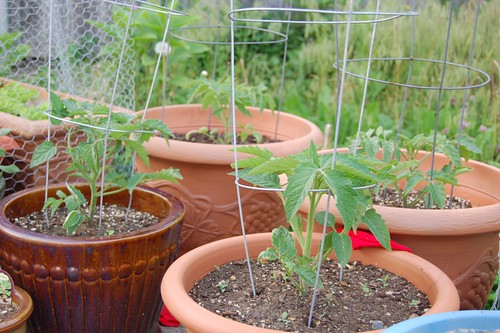
Speaking of grown from seed, look at the growth of the tomatoes in the last four days!
So, friends. What are you growing this year?
.jpg)
